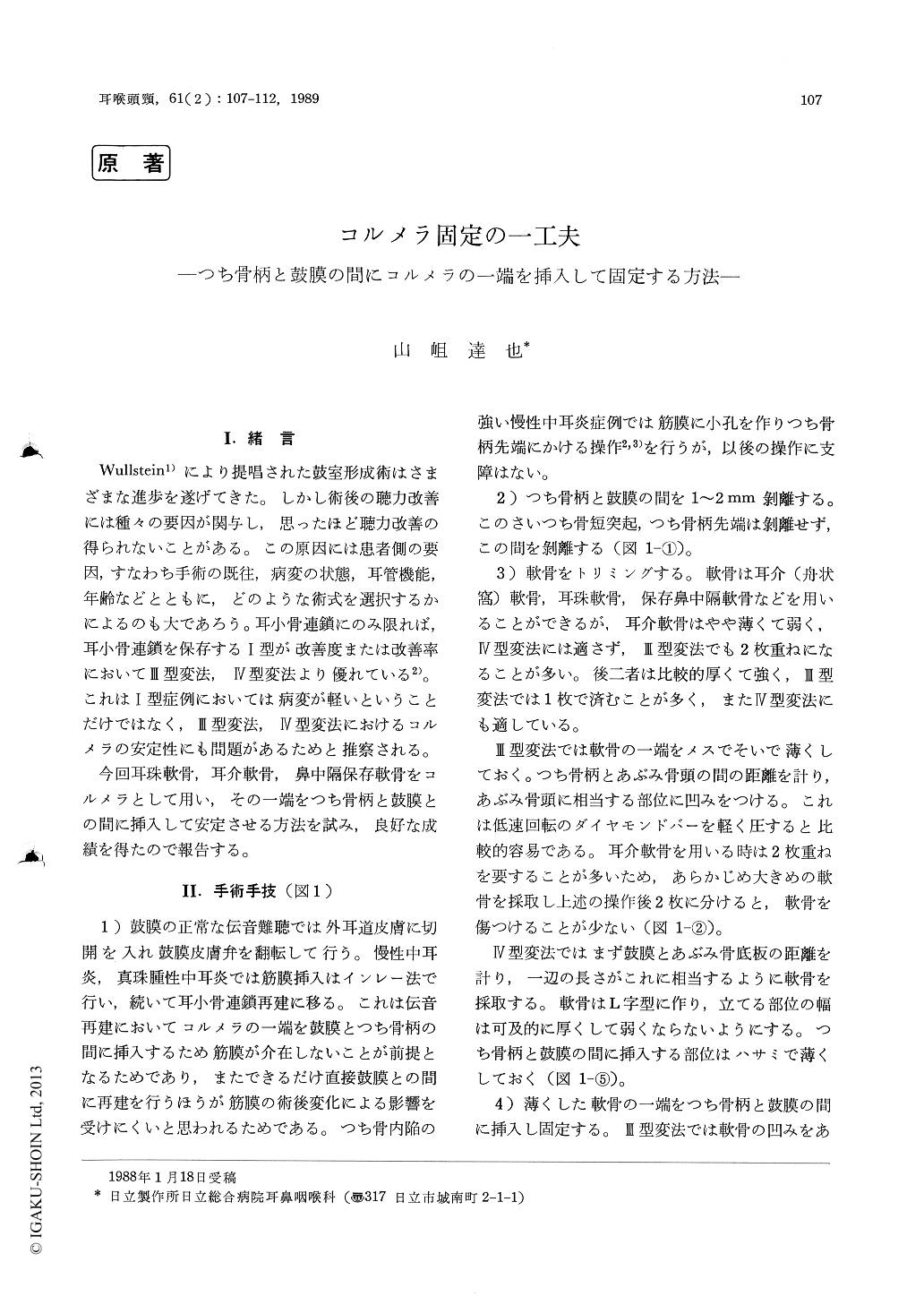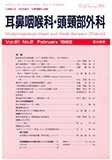Japanese
English
- 有料閲覧
- Abstract 文献概要
- 1ページ目 Look Inside
I.緒言
Wullstein1)により提唱された鼓室形成術はさまざまな進歩を遂げてきた。しかし術後の聴力改善には種々の要因が関与し,思ったほど聴力改善の得られないことがある。この原因には患者側の要因,すなわち手術の既往,病変の状態,耳管機能,年齢などとともに,どのような術式を選択するかによるのも大であろう。耳小骨連鎖にのみ限れば,耳小骨連鎖を保存するI型が改善度または改善率においてIII型変法,IV型変法より優れている2)。これはI型症例においては病変が軽いということだけではなく,III型変法,IV型変法におけるコルメラの安定性にも問題があるためと推察される。
今回耳珠軟骨,耳介軟骨,鼻中隔保存軟骨をコルメラとして用い,その一端をつち骨柄と鼓膜との間に挿入して安定させる方法を試み,良好な成績を得たので報告する。
A method of stabilization of a columella in tympanoplasty was developed. An edge of carti-lage columella was thinned and inserted between the tympanic membrane and manubrium. The other end was placed on the capitulum or foot-plate. Chorda tympani nerve was rest on the columella. The columella was stabilized between the tympanic membrane and manubrium.
This method was performed in 20 cases of tympanoplasty; type III with a columella in 16 cases and type IV with a columella in 4. Average postoperative air-bone gap was 7. 2 dB in type III and 11. 3 dB in type IV. All cases showed hearing improvement of less than 20 dB air-bone gap.

Copyright © 1989, Igaku-Shoin Ltd. All rights reserved.


